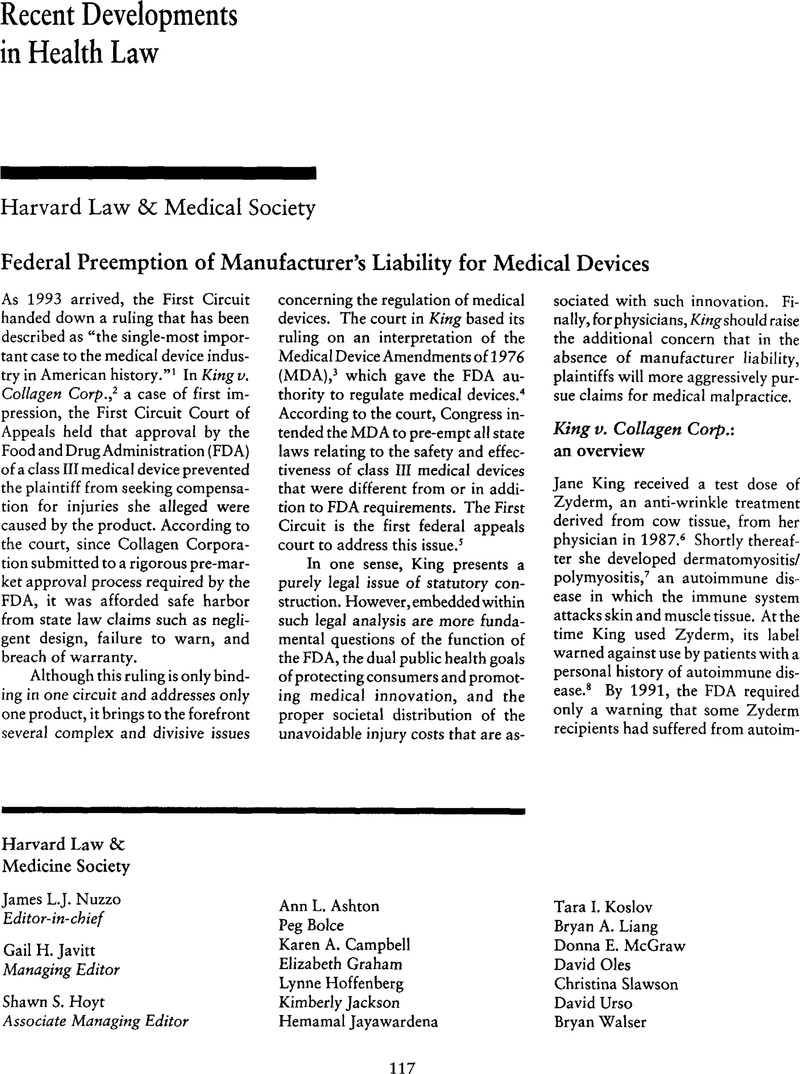See
Strickland, N. Kathleen and
Katerndahl, John P.,
Current Applications and Limitations of the Learned Intermediary Rule, Litigation and Administrative Practice Course Handbook Series, Litigation, Toxic Tort Case Essentials: Strategies, Experts, Motions, and ADR, Practising Law Institute, 1992, 446 PLI/Lit
259,
citing Magee v. Wyeth Labs, 214 Cal. App. 2d 340, 350 (
1963).
Google Scholar